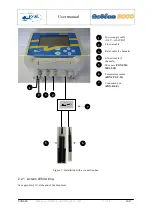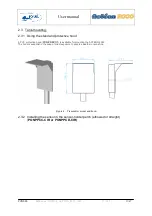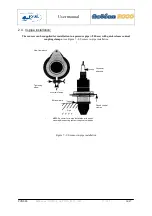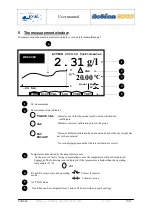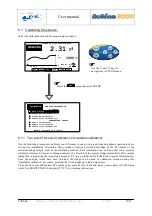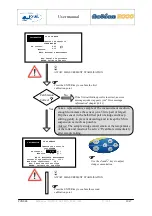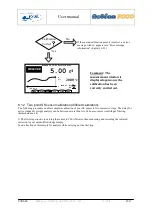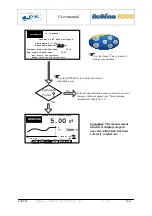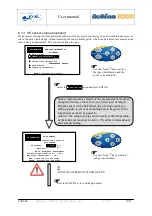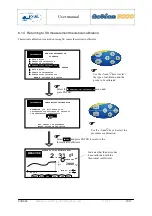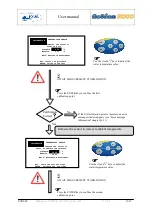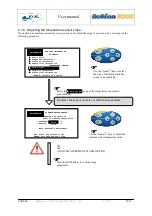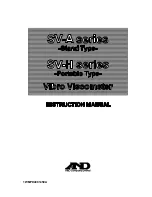
User manual
PONSEL
Référence : NOTICE_ACTEON_2050_v001
V : 002
18/67
6 Calibrating the ACTEON 2050
Important information.
Calibration frequency:
The SS sensor must be calibrated (zero + slope) at least once every two weeks, during the regular optics cleaning
process.
However, recalibration is advisable as soon as a shift of more that +/-0.2g/l occurs (during automatic control
with a recently calibrated reference SS meter, or during "dry weight" analysis, while taking account of the fact
that the analysis can sometimes be delayed by up to 24 hours in relation to the current state of the active sludge
measured with the controlled PONSEL SS-meter. Hence the possible use of a "differed calibration" to
compensate for this problem).
If frequent recalibrations are carried out (once a day for example), there is no need to take the perch out
of the water, clean the optics or zero adjust in clean water. Simply adjust the slope in situ by leaving the sensor
in place in the sludge being measured.
Sensor calibration and positioning procedures: Even though, in our detailed explanations, we have always
mentioned sludge specimens taken from tanks and placed in buckets for sensor calibration, there is no objection
to calibrating the sensor in situ attached to a perch and placed in the measurement medium at the point where it
will subsequently be installed for regular measurements. The sludge content in g/l may already have been
measured for this point ("immediate calibration" or "gain adjust" menus), for instance by using a recently
calibrated reference SS meter, or sludge may be taken from near the optical measurement unit and analysed
while immediately following up with a "differed calibration" without waiting on the results of this analysis.
In this case calibrate in situ during a stable stage in the activation process. Avoid calibrating during bubble
aeration or during stagnation periods. Calibration should preferably take place after aeration. An SS sensor
should be placed in the most stable hydraulic conditions possible, without excessive turbulence or stagnation,
and with regular mixing, so that the SS are perfectly suspended in the medium and that the location is
representative of the SS content in the tank as a whole and in the active sludge area.
In situ calibration remains relevant in the sense that it integrates the hydraulic mixing regime and suspends the
SS, while sludge in a pail only approximates this hydraulic mixing regime, and can thus result in more or less
large measurement differentials in the tank after calibration. Moreover, in situ calibration is carried out at the
tank's temperature thus preventing heat shocks and shifts.







